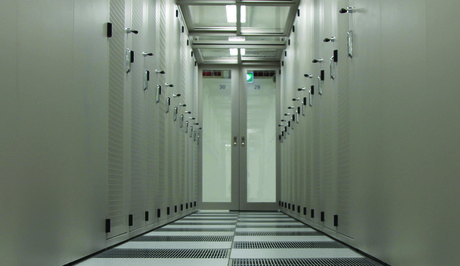Flexibility key to public sector data centre consolidation
By Greg Whiffin, Director, Commercial Operations, Enterprise Networks
Tuesday, 12 September, 2017

As astute and demanding buyers, state and local government departments are instrumental in driving improved availability, energy efficiency and security of data centre design and infrastructure.
With new digital government services, everything from health records to automated payments rely on superior reliability and 100% uptime of the data centre.
As a result, the government and its network suppliers are under more pressure than ever before to meet rigorous uptime requirements — there’s no room for shutdowns for maintenance, repair or replacement of equipment. Connectivity failure is not an option. And, solution flexibility is critical for co-location data centres serve the government objectives of optimal speed of deployment, stability and scalability.
Such was the case for Australian Data Centres (ADC). One of the first organisations to be accepted by the federal government agencies onto their Data Centre Facilities Supplier Panel, ADC was required by the mandate to deliver resilient facilities to meet government and federal bodies’ speed and capacity requirements in the future, today.
The as-a-service approach — allowing customers to choose their technology and level of support — is core to ADC. As a Tier III certified facility located in the ACT, ADC’s infrastructure is required to support from as little as a rack to private suites and larger footprints.
Like all technology service providers, data centres are increasingly focused on enabling greater flexibility and customisation in their hardware and software infrastructure. Co-location data centres must be equipped to securely manage customer information and access without any fear of downtime, while also handling both current and future IT requirements.
Let’s examine why deploying the right cabling infrastructure provider is key to meeting and exceeding stringent public sector expectations:
Speed of deployment
Selecting a high-density pre-terminated cabling system is essential when it comes to simplifying installation and superior performance in the data centre, laying the foundation of connectivity from the fibre distribution rooms. Solutions comprising optical trunks, harnesses, modules, housings and jumpers are inherently environmentally friendly, requiring less energy for powering and cooling than copper systems.
By deploying an all-optical solution that can be installed faster than traditional cabling systems, the network will be ready and capable of accessing new revenue streams fast. Custom-engineered components enable simple integration into common SAN directors, while the pre-terminated components allow for reduced installation time and faster moves, adds and changes (MACs).
Meet future capacity requirements, today
It’s no easy task to deliver seamless bandwidth capacity every time customers need more provisioning and increased service velocity. Space efficiency is a key priority for public sector data centres to ensure they’re able to seamlessly grow and scale as the needs of multiple government departments and their client increase, meeting all demand spikes seamlessly. On top of this, there’s a business imperative to minimise further real estate needs. This challenge can be addressed by maximising density within a small footprint to optimise space and capacity.
ADC turned to optical cabling to improve duct utilisation, enable smaller enclosures and provide a future-ready infrastructure. Premium singlemode fibre offers ADC and its clients greater flexibility and confidence with low loss and less clutter, and increases real estate utilisation by up to 50%. With the right structured cabling architecture, ADC can support power densities up to 33 kW per rack and custom build to suit each customer’s requirements, without having to add more floor space. ADC is able to consolidate its fibre footprint for the future, stay ahead of MACs and manage demand growth cost-effectively. This also ensures ADC maintains the robustness and reliability required to meet Tier III standards at all times.
Improve environmental efficiency
Government data centre operations currently generate around 300,000 tonnes of carbon annually. Modern data centre technology can reduce this carbon footprint by around 13% or 40,000 tonnes per annum. While reliability and speed of access to data are the key concerns for data centre operators, sustainability is an increasing priority for the public sector.
With high security levels and high energy efficiency minimising its environmental footprint, ADC’s data centre is meeting the requirements of defence and law enforcement agencies. The investment in tip-to-tip fibre-optic connectivity throughout its data centre also means ADC can support the government’s focus on a more ecological use of resources. The data centre’s infrastructure will scale, as and when needed, without compromising availability, security, operational simplicity or total cost of ownership (TCO).
High-speed connectivity is a critical element in co-location solutions. The greater flexibility a solution provider builds into connectivity, the better the end result for the customer. This is especially true for the public sector where data centre providers need to meet stringent government requirements both today and in 25 years.
Luminous running trail utilises IoT tech, wins awards
The Jinji Lake Luminous Trail, a project developed by China's Suzhou Industrial Park, has...
Are we dangerously dependent on submarine cables?
A new study warns that submarine communication cables are increasingly vulnerable to both natural...
Rethinking data centre sustainability
In this interview, Terry Maiolo, VP & General Manager for Asia Pacific at cloud computing...



